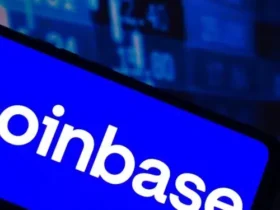An important indicator of BTC profitability is at all-time lows.
Meanwhile, hosting for high-performance computing is attractive to miners.
Bitcoin mining is going through one of its biggest predicaments in years. This crisis has sparked survival behaviors among miners, who are beginning to diversify the use and purpose of their data and energy centers.
This diversification aims to increase the profitability of companies dedicated to bitcoin mining to levels of the past. As? Taking advantage of the opportunity that high performance computing (HPC) and artificial intelligence are giving (AI), two technological areas that can take advantage of the infrastructure built for bitcoin mining.
This is the current situation of Bitcoin mining
According to the insights.braiins data, bitcoin profitability is at historic lows. The main metric that measures this profitability is the hashprice, which represents the dollar value of each terahash mined per day.
At the time of writing, the hashprice is USD 0.045. To give an idea of the negative dimension of this profitability (and taking into account that this data is before the 2024 halving), the hashprice during May 2022 was USD 0.128, almost triple.
Overall, the progressive decline in bitcoin mining profitability is a historical constant, as evidenced by a quick look at the historical chart.

Meanwhile, the difficulty of bitcoin mining, which is an expression of the global hashrate, increases at a rate proportional to the decline in profitability. This correlation is also historical, and has a clear meaning: the more hashrate there is, the more mining machines try to solve the algorithms to process a block. And as more machines work mining bitcoin, the greater the competition. Therefore, the profitability is lower.
As if that were not enough, since the April 2024 halving, miners who solve a block receive 3,125 BTC as a reward, half of the 6.25 they received before.
In truth, this gradual decrease in the profitability of bitcoin mining since its inception was expected, taking into account that the currency is programmed to reduce its supply by half, and therefore the reward per block to miners, each four years.
Artifacts such as ordinals had the collateral effect of solving this problem, increasing profitability through payment of user commissions that would go directly to the miners. However, as reflected by the statistics of the Dune data platformregistrations of this class in Bitcoin are increasingly scarce. This prevents them from being a source of extra profitability for mining.

This lack of profitability within the industry is leading mining companies to diversify their services into tangentially connected areas, but of a different and autonomous nature, such as artificial intelligence and high-performance computing.
Artificial intelligence: a golden opportunity
According to Matthew Sigelhead of digital asset research at VanEck, the change of focus of mining companies in search of profitability towards AI is due to a synergy that is simple to understand: “Artificial intelligence companies need energy, and bitcoin miners have it. As the market values the growing AI/HPC data center market, power access, especially in the near term, is commanding a premium.”
Charging a premium (premiumin English), means that access to energy to power AI and HPC is being valued higher than usual due to its rapid and increasing demand.
The infrastructure compatibility between Bitcoin mining and artificial intelligence “mining” would be due to the fact that, like proof of work (PoW), it requires high amounts of energy and deals with electricity grid providers that make the cost cheaper. cost of energy.
According to the same VanEck analyst, “if properly equipped with power, bandwidth and cooling systems, bitcoin mining sites are ideal for capturing this value for AI/HPC cloud services.”
He comments that the infrastructure created for bitcoin would be more prepared than other construction and development projects, and that the centers would be ready in less than a year to enhance AI and computing services.

It estimates that the reoriented mining centers have a net estimated value of $37.6 billion currently, if they achieve the conversion of 20% of their capacity by 2027.
Specific cases: who is turning towards AI?
TeraWulf Inc, a Nasdaq-listed mining company announced on October 3 that it completed the sale of its 25% stake in Nautilus Cryptomine, a zero-carbon nuclear energy facility where bitcoin is mined.

TeraWulf received USD 92 million in exchange, which invested in the construction of a facility called CB-1, located in New York, responsible for supporting data centers with artificial intelligence and high-performance computing.
A little more distant in time, Hive Digital Technologies, one of the best-known mining companies, advertisement a change of focus. Instead of dedicating itself solely to bitcoin mining, today it uses high-end NVIDIA GPUs that it rents as a service. Thus, computing power to large language models (LLM) and other AI applications of contracting companies.
According to Hive, this company “operates thousands of NVIDIA A40 GPUs that, according to the manufacturer, combine ‘best-in-class professional graphics with powerful AI processing and acceleration.’”
The reorientation of the operations of certain mining companies towards AI has changed investors’ expectations about their stock prices. Such is the case of the shares of Marathon Digital, a public Wall Street company that, apart from its mining activities, turned towards AI. According to certain media, This company’s shares could grow almost 50% in the coming weeks and months.
As CriptoNoticias reported, Core Scientific was one of the first companies to take this turn into new areas. HUT8 (HUT), a BTC mining company, forged an alliance in June with Coatue, an AI-related company.
It remains to be seen whether this diversification of profitability by miners is a transitory state of affairs, or becomes the rule.
The declining performance of Bitcoin mining activity suggests that there is no turning back from this transition to varied business models. However, you never know how the BTC price will behave, which can be of great help, when it rises, to produce profitability for miners.
It is also unknown what unexpected trend, such as Ordinals, may emerge within the Bitcoin network in the future. Another event like that could dynamite people’s will and encourage them to use the network, create active wallets and send transactions. Such an event would increase miners’ commission earnings, which would provide a respite from the current mining crisis.






Leave a Reply